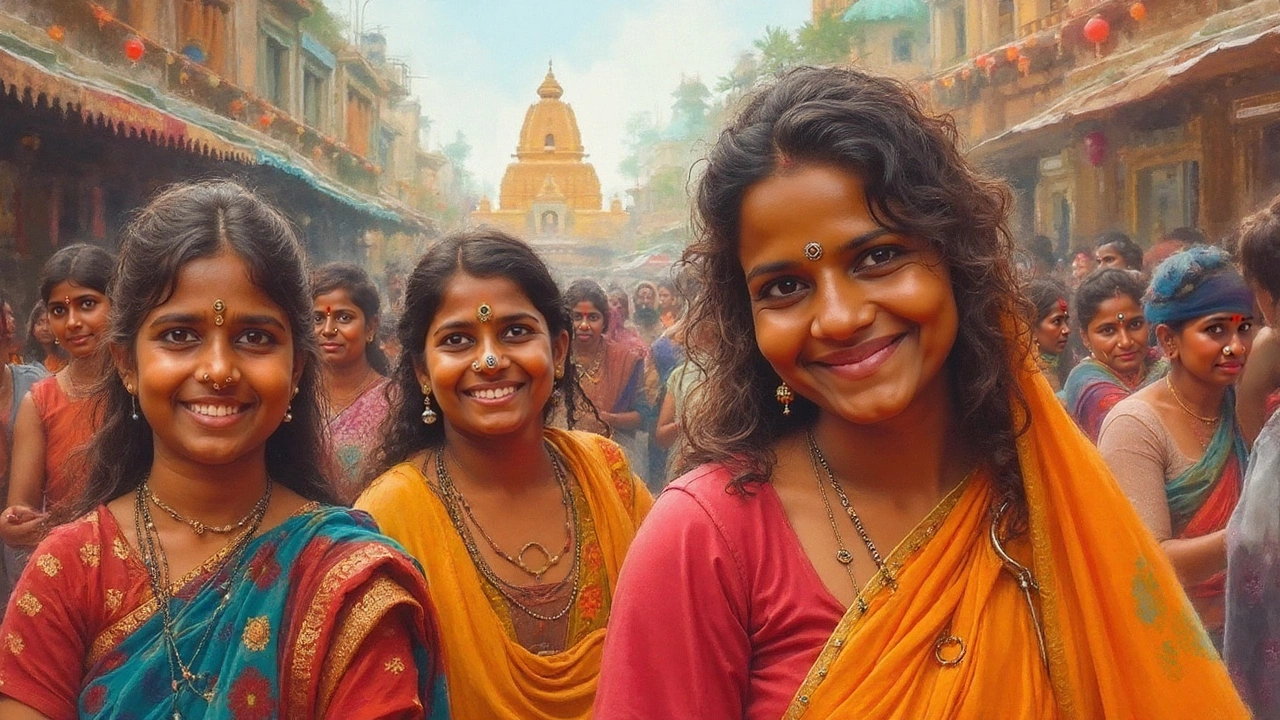Hinduism – Culture, Rituals and Jewelry Insights
Ever wonder why a black bead appears in many mangalsutra designs or why breaking a glass during a ceremony feels oddly powerful? Hinduism isn’t just a set of beliefs; it’s a living web of daily habits, festivals, and style choices that shape how people live, dress and shop for jewelry.
First thing to notice is the blend of myth and practicality. From the moment a child is named, a tiny gold chain might be tied around the wrist, not for fashion but for protection. These tiny customs keep popping up in modern stores, so knowing the story behind them helps you pick pieces that truly fit your vibe.
Everyday Beliefs and Practices
In most Hindu homes, you’ll find a small altar or a corner with a lamp, incense and sometimes a tiny idol. Lighting a diya before meals isn’t just about scent; it’s believed to invite positive energy. When you hear people say "shubha" (auspicious) before a new purchase, they’re actually asking the gods for a smooth transaction.
Festivals bring a burst of color and specific rituals. Take Diwali – the Festival of Lights. Families clean every nook, replace old curtains with fresh ones, and wear new clothes. Buying a new gold bangle or a pair of silver earrings on this night is considered a boost for wealth and luck. Knowing the timing can save you a lot of regret if you later wonder why a piece feels off.
Jewelry & Symbolism in Hindu Life
Jewelry in Hindu culture isn’t just about shine. Each element carries a meaning. Black beads in a mangalsutra, for example, symbolize protection against the evil eye – a belief that dates back centuries. When you choose a design with a tiny cow motif, you’re honoring the sacred status of the animal and showing respect for earth.
Gold stays on top because it’s linked to the sun, prosperity and purity. Silver, on the other hand, is tied to the moon and calmness. That’s why many women wear a silver chain during a mourning period – it signals a shift in energy without losing elegance.
Even the way a piece is worn matters. A nose pin placed on the left side of the nose is traditionally connected to the goddess Parvati, symbolizing marital bliss. The right side might be chosen for fashion, but understanding the original purpose can add a layer of confidence when you rock it.
If you’re shopping online, look for hallmarks like the BIS stamp for gold or the "833" stamp for silver. These tiny numbers act like a passport, confirming purity and preventing cheap knock‑offs. A quick magnet test can also separate pure silver from plated versions – just hold a magnet near the piece; if it sticks, it’s likely plated.
When you’re picking a gift for a wedding, consider the cultural expectations. A classic gold mango‑shaped pendant is safe, but a modern black‑bead mangalsutra can make a bold statement while still respecting tradition. Pair it with a matching bangle set and you’ve got a complete look that feels both contemporary and rooted.
Finally, remember that Hinduism thrives on personal expression. Not everyone follows every rule, and many families blend old customs with new trends. Use the stories behind each symbol as a guide, not a rulebook. The more you understand the “why,” the easier it becomes to choose pieces that genuinely reflect your style and values.
So next time you scroll through a catalog or visit a market stall, think about the deeper meanings. Your next gold ring, black‑bead bracelet or silver nose pin can be more than an accessory – it can be a little piece of culture you carry with you every day.
Nose Studs and Religion: Traditions, Meanings, and Cultural Influence
Explore the deep ties between nose studs and religion. Learn which faiths embrace nose piercings, what they symbolize, and how they shape cultural traditions.




